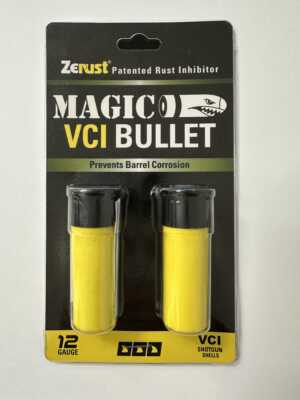How to Store Your Deer Gear: Rust Prevention for Hunting Gear Storage

How to Store Your Deer Gear: Rust Prevention for Hunting Gear Storage
To prevent rust from targeting your deer gear, proactively set your scope on the best hunting gear storage strategies and cleaning practices.
Deer hunting – whether a survival necessity or challenging recreation – is a longstanding and thriving tradition in North America. White tail deer is the most abundant species of cervidae (the scientific name for all types of deer), and thus the most commonly hunted. The U.S. Fish & Wildlife Services reports there are approximately 8 million deer hunters in the country, and roughly 80 percent of those use both guns and bows. Deer hunting dollars contribute approximately $21 billion to our nation’s GDP, and provide a steady revenue stream for state and federal wildlife conservation efforts.
According to the Outdoor Industry Association, American hunters as a whole spend roughly $7 billion-a-year just on equipment. That includes firearms, ammunition, archery gear, knives, optics, batteries, cooking equipment, calls, decoys, scent removers, and more. Using a bit of care in the cleaning and storage of that equipment – particularly at the end of season – is important to protecting that investment.
Deer Hunting Gear Storage Tips
An active deer hunting season can quickly take a toll on your hunting and sporting gear. Guns, bows, knives, tree stands – all of that need to be carefully cleaned, dried, and kept in a cool, dry storage space to avoid rust and other types of corrosion from taking hold. Keep in mind that scents, moisture, and temperature fluctuations can all take a toll. Taking the extra step of tossing a small, non-toxic corrosion-inhibitor into the hunting gear storage closet, container, or box can also influence the condition in which you find your deer gear the next time you go to don your blaze orange.
Guns & Ammo
Firearms and ammo are probably the most expensive items in your hunting inventory. They’re also the most sensitive in terms of their storage needs. Not only do you need to secure your guns against unauthorized access, you must also protect them from rust and corrosion. Guns are generally treated with exterior coatings to protect them from rust, but hunters still need to use a little extra care and elbow grease to ensure parts don’t stick together. You can start with a thorough cleaning, using gun cleaner and gun oil. Then after thorough drying, you can store it with an internal, corrosion-inhibiting tube & barrel strip. Rifles and other larger guns can be kept in fleece-lined, corrosion-inhibiting rifle bags. Alternatively, hunters can opt for a plastic rust prevention firearm protection bag (also available for ammo storage) or simply a corrosion prevention vapor capsule or plastab placed inside a closet, safe, drawer, or other storage device. Ideally, the storage location will be a space that is clean and dry with minimal temperature swings.
Knives & Axes
Any kind of cutting tool used during deer hunting excursions should be carefully cleaned, dried, and then stored with a similar attention to detail you give your guns. Common deer hunting cutting tools include bone knives, daggers, gutting knives, bowie knives, buck knives, and skinning knives (also known as “the skinner”). These, along with hatchets and hand axes are used for field dressing, skinning, and butchering. Unless the manufacturer indicates otherwise, you can typically wash these thoroughly with soap and water (just make sure no water gets trapped in the handle or other components). Dry completely, lightly lubricate the metal, wax the wooden components, and then store them securely. To prevent corrosion and rust, you could use a VCI (vapor corrosion inhibitor) tool box drawer liner, VCI polybag, or one of the capsules or plastabs we mentioned earlier.
Cameras & Electronics
Many modern deer hunters use all sorts of digital aids – including electronic callers, game cameras (aka trail cameras), satellite phones, navigation devices, and more. Most electronics can be easily damaged by exposure to the elements or temperature extremes. Protect them by powering them down completely, removing the batteries (which can leak and cause a lot of corrosive damage), and store them in a cool, dry space. For rust and corrosion prevention of electronics, we recommend using plastabs, polybags, or vapor capsules (depending on the size of your equipment).
Bows & Archery Equipment
About 1 in 5 deer hunters almost exclusively use bows and archery equipment. At the end of the season, your bow is likely to need some TLC before it goes back into storage. Clean it thoroughly, wax the strings, and treat the metal components (bolts, screwheads, etc.) with an appropriate lubricant. Store it in a cool, dry enclosure, and be sure to toss in a plastab or VCI capsule for rust prevention.
Tree Stands
Some hunters leave these up until the next season, but that’s generally inadvisable for a few reasons. Stands really should come out of the trees each year. They should be fastidiously cleaned and inspected for possible damage. The straps are usually what most deer hunters focus on, but other components – like wires, bolts, nuts – should not be overlooked. Loose elements need to be checked and tightened. Tree stands kept in closets or large boxes with the rest of your hunting gear can be protected from rust and corrosion with vapor capsules placed inside the storage apparatus.
Hunters with questions about which corrosion and rust prevention is best for their setup can contact our knowledgeable team of rust prevention specialists for professional insight and advice.
cu*************@ze************.com“>Contact Zerust for information on VCI products to help with hunting tool rust prevention by emailing us or calling (330) 405-1965.
Additional Resources:
Hunting in America: An Economic Force for Conservation, National Shooting Sports Foundation
More Blog Entries:
Affordable Tool Box Rust Prevention for Less Than $5, July 28, 2022, Hunting Gear Storage Rust Prevention Blog




